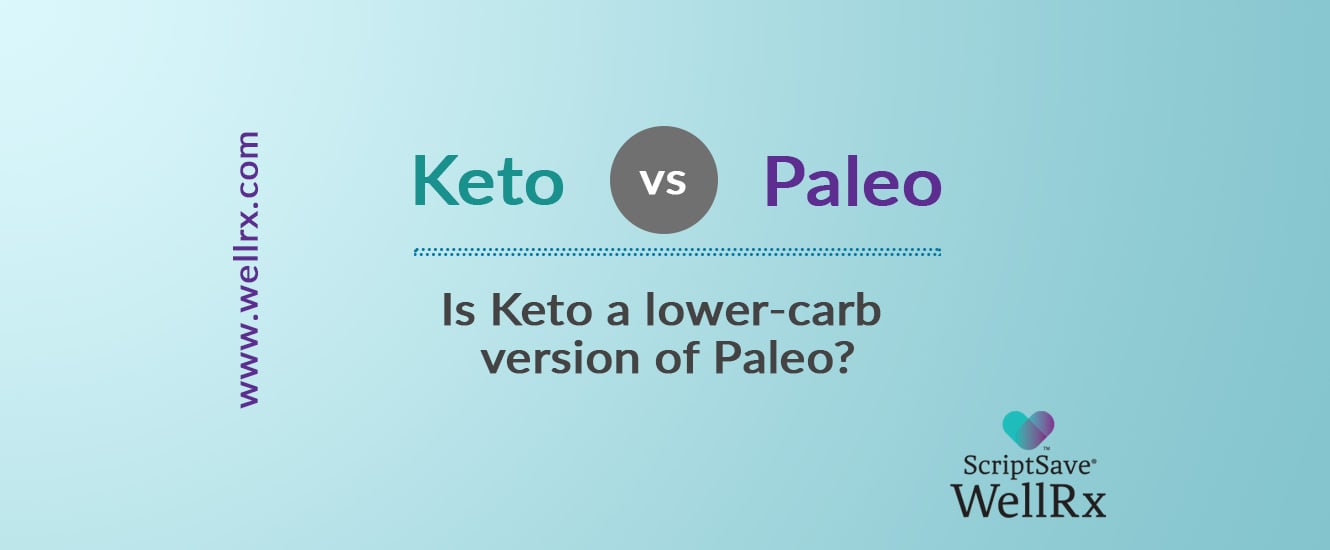Curious about adopting a paleo or keto diet? Proponents of these popular diets claim they offer numerous health benefits, including weight loss, increased energy levels, and a lower risk of disease.
While they may look similar, the paleo diet and the keto diet are different in nature. With each diet, however, you can adapt the exact foods you eat to suit your individuals needs and preferences.
Continue reading to learn more about these popular diets.
The paleo diet is intended to mimic the dietary habits of our Paleolithic ancestors, who lived thousands of years ago. It generally consists of whole, unprocessed foods such as fresh fruits and vegetables, nuts, seeds, eggs, and meat. Processed foods should be avoided, including grains, sugar, most dairy products, and legumes.
The paleo diet also places a strong emphasis on food quality and recommends eating organic produce, wild-caught game, and grass-fed meat. The idea behind this way of eating is that our hunter-gatherer ancestors likely had lower rates of degenerative diseases such as heart disease, obesity, and cancer. These “diseases of civilization” are often seen in higher rates in areas where people follow the typical Western diet, which is characterized by refined grains, processed meats, dairy products, sugar, and other high-glycemic foods.
The paleo diet is not an exact list of foods, but rather a set of general guidelines to govern how you eat. As long as you are choosing whole, unprocessed foods, you can adapt the diet to your personal preferences.
As a general rule, avoid anything that looks like it was made in a factory. If it’s something that would have been available thousands of years ago, it’s fair game.
The keto diet is different from the paleo diet, although sometimes they may look similar.
The keto diet, which is short for ketogenic diet, is intended to change the way the body uses energy. The main characteristic of the keto diet is that it is very low in carbs and high in fat. Keeping carbohydrates extremely low causes the body to use up its fat stores and begin using fat for energy rather than glucose. When this happens, the liver produces molecules called ketones, which the body uses for fuel. This is known as being in a state of ketosis.
The keto diet is much more restrictive than the paleo diet. To keep carbohydrates within the desired range — typically 5 percent of total calories — certain foods must be avoided, including most fruit.
The keto diet also requires an adjustment period during which the body adjusts to using fat as its primary source of energy. This period typically consists of a very low carbohydrate intake of roughly 20 grams per day and may last three or four weeks.
Because the keto diet trains the body to use fat for fuel, it is often used for weight loss. However, keto advocates maintain that it can lead to other benefits such as increased energy and mental clarity, better sleep, clearer skin, better blood sugar control, and improved hormone levels and cholesterol levels.
A common misconception about the keto diet is that it is nothing but meat and eggs. In reality, the keto diet consists of roughly 75% fat and 20% protein. That means that plant-based fats should also be included, such as nuts, seeds, olives and olive oil, coconut, and avocados.
Different approaches to the keto diet exist. Some people adhere to a whole foods keto diet, which may look very similar to a paleo diet minus high-carb foods such as fruit and potatoes.
Other people follow a “lazy keto” approach, which allows some processed foods and ingredients such as artificial sweeteners, as long as they don’t exceed the allotted carbohydrate intake.
Some people choose to include cheese and other dairy products such as heavy cream, while others avoid dairy products due to their inflammatory properties.
A keto diet can also include lots of non-starchy vegetables. The body doesn’t absorb fiber, so the fiber in foods such as spinach, broccoli, asparagus, Brussels sprouts, zucchini, and other vegetables can be deducted from the total carb intake. The result is a figure known as net carbs. For example, one cup of spinach contains only 0.4 net carbs, making it an absolutely keto-friendly food.
Adopting one of these diets may require a big adjustment to the way you shop for food. Both paleo and keto diets discourage consuming processed foods, which will mean buying most of your food from the outer aisles of the grocery store: meat, eggs, and produce.
Both diets may also involve venturing into the center aisles for select foods such as coconut oil, olives, and nuts. Most foods in the center aisles, however, are processed and will be off-limits, although increasingly health food brands are offering foods that are paleo- or keto-friendly. If you do buy packaged foods, make sure to read the ingredients. Even foods that claim to be suitable for paleo or keto diets may contain ingredients such as sugar, artificial sweeteners, or other additives.
This may be confusing at first, but you will eventually find staples you rely on and brands you can trust. Our Grocery Guidance app can help you find alternatives to the foods you buy most often and determine which foods on the shelf are truly good for you. Simply scan the barcode on your food package to reveal its WellRx Health Index and discover “better for you” alternatives. You can also create a list of your favorite grocery items and find foods that support your nutrition goals. Download it on the App Store or Google Play today.
Karen Eisenbraun is a Certified Holistic Nutrition Consultant. She holds an English degree from Knox College and has written extensively about topics related to holistic health, clinical nutrition, and weight management.
References:
https://www.ncbi.nlm.nih.gov/pmc/articles/PMC6362881/
https://pubmed.ncbi.nlm.nih.gov/15148063/
https://www.ncbi.nlm.nih.gov/pmc/articles/PMC4271636/













 Store & manage your medication list
Store & manage your medication list Medication pricing updates
Medication pricing updates Pill & refill reminders
Pill & refill reminders Medication journal & mood log
Medication journal & mood log